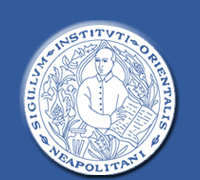Istituto Universitario Orientale
| Università degli Studi di Napoli "L'Orientale" | |
 |
|
| Latin: Instituti Orientalis Neapolitani | |
| Type | State-supported |
|---|---|
| Established | 1732 |
| Rector | Prof.ssa Elda Morlicchio |
| Students | 10.293 (2010/2011) |
| Location | Naples, Italy |
| Sports teams | CUS Napoli |
| Website | [1] |
The Università degli Studi di Napoli "L'Orientale" (English: University of Naples "L'Orientale") is a university located in Naples, Italy. It was founded in 1732 and is organized in 4 Faculties. It is the oldest school of Sinology and Oriental Studies of the European continent and the main university in Italy specialized in the study of non-European languages and cultures, with research and studies agreements with universities from all over the world. It is one of the most prestigious universities in the world regarding Asian cultures and languages.
The Università degli Studi di Napoli "L'Orientale" is the oldest school of Sinology and Oriental Studies of the European continent.
The name "Orientale" is a clue to the origins of the institution. In the mid-17th century, the Manchus established the Qing Empire in China and started a remarkable period of openness towards the west. This included welcoming Christian missionaries. One such person was the missionary, Matteo Ripa, of the Propaganda Fide, from the kingdom of Naples, who worked as a painter and copper-engraver at the imperial court of the Kangxi Emperor between 1711 and 1723. He returned to Naples from China with four young Chinese Christians, all teachers of their native language; they formed the nucleus of what would become the "Chinese Institute" of Naples, sanctioned by Pope Clement XII in 1732 to teach Chinese to missionaries and thus advance the propagation of Christianity in China. Originally it was also created to educate Indian and Chinese languages experts for the Ostend Company.
After the unification of Italy in 1861, the institution was transformed into the "Royal Asian College" and other languages such as Russian, Hindustani, and Persian were added to the curriculum. The institution then became a secular school for the study of eastern languages in general, and then, over the course of decades, African languages and, indeed, all modern European languages. Today more than 50 languages are taught.
...
Wikipedia
